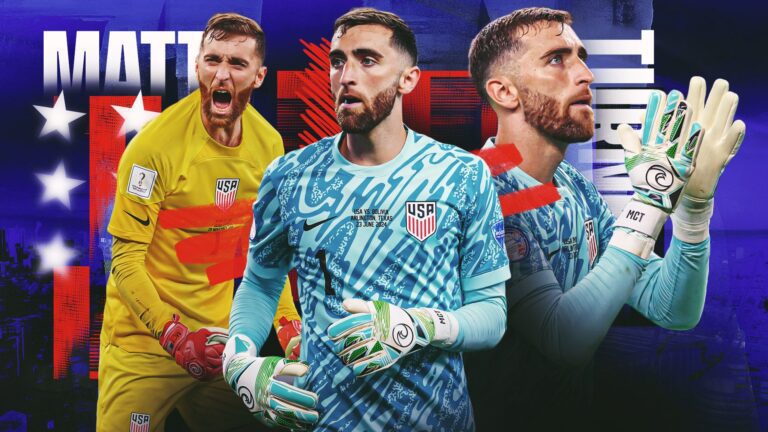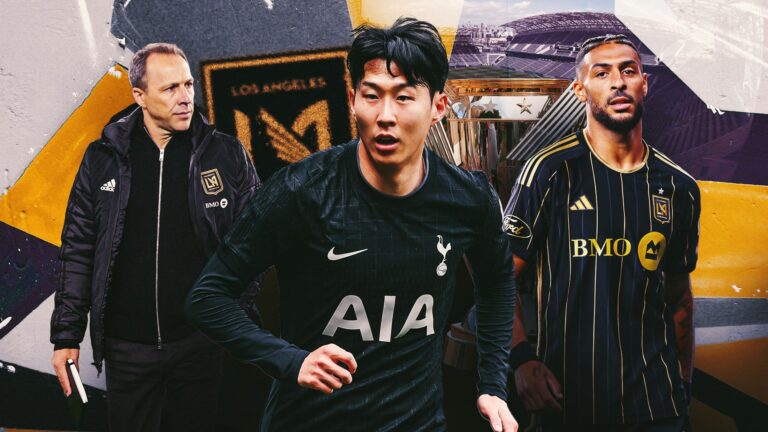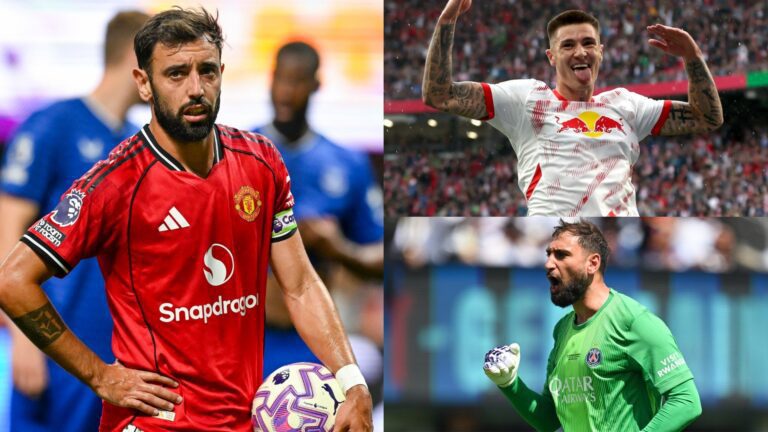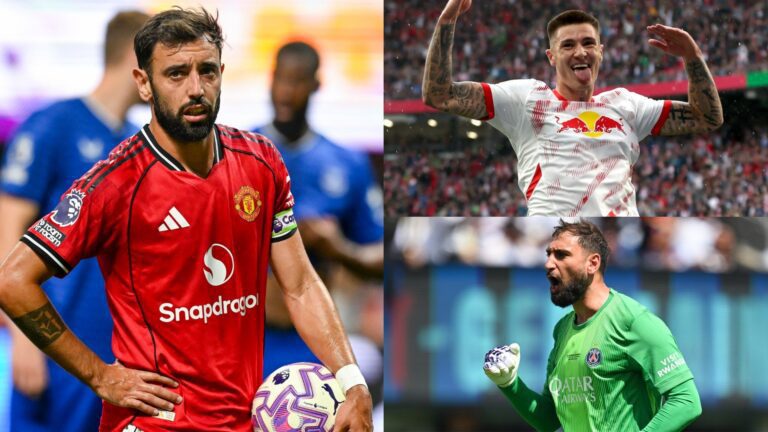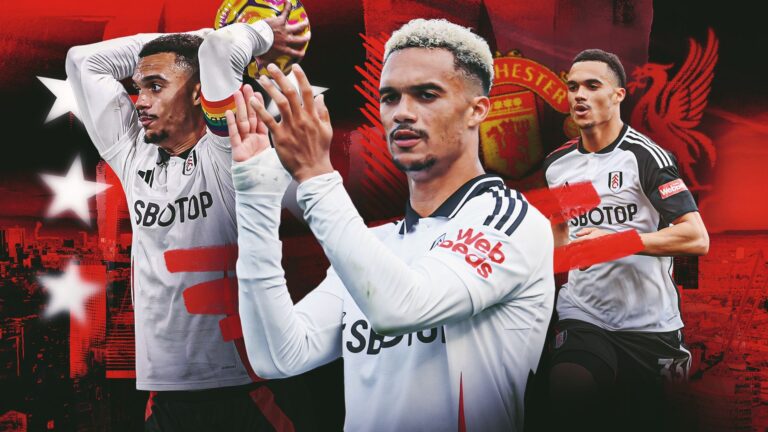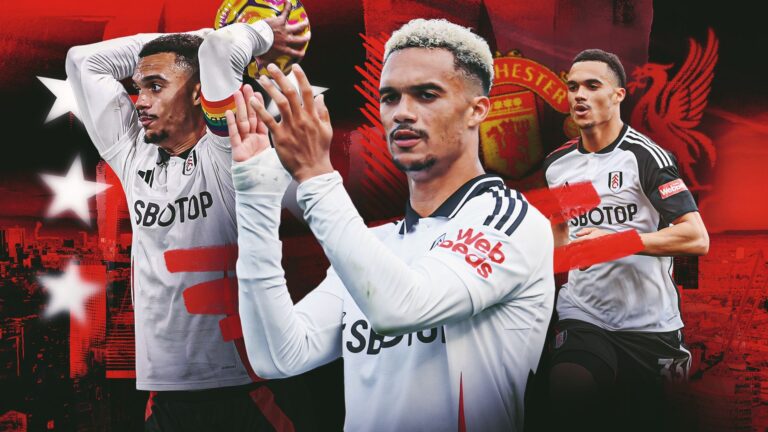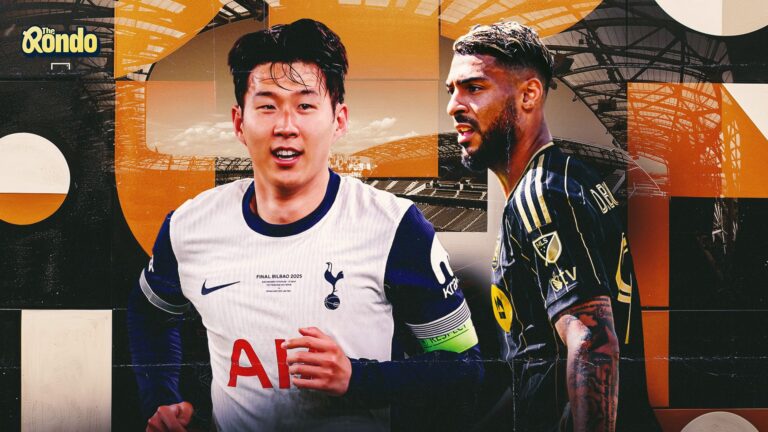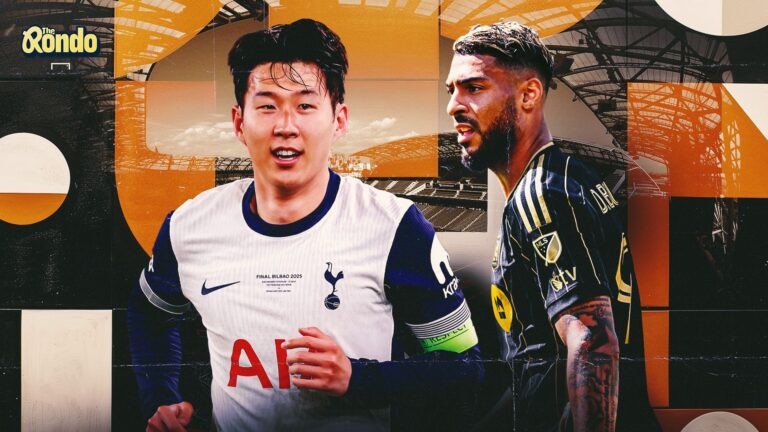Navigating the MLS Talent Drain: Can American Soccer Retain Its Rising Stars?
In the fast-paced world of Major League Soccer, where unexpected talents can skyrocket to fame, clubs face a tough battle against financial constraints and the magnetic pull of European leagues. This dilemma highlights the league’s growth pains, but with potential reforms on the horizon, there’s hope for a more balanced future.
The Bitter-Sweet Departure of a Breakout Star
Charlotte FC prioritized loyalty over lucre. Sure, the financial windfall was appealing, particularly from an unforeseen transfer windfall. Yet, victories on the pitch come from skilled athletes, not just bank balances. Talents like Patrick Agyemang are the true game-changers.
Recently, the team received a substantial sum from Derby County in England for Agyemang’s transfer-amounting to $8 million, with possible add-ons. This marks a record-breaking deal for the club, providing a significant cash boost. It’s especially noteworthy since Charlotte discovered Agyemang via the MLS SuperDraft following his time at colleges like Eastern Connecticut and Rhode Island.
From a business standpoint, it’s a masterstroke. They nurtured an overlooked prospect into a consistent figure for the U.S. men’s national team and cashed in handsomely, allowing reinvestment in the squad. For both the club and Agyemang, whose ascent from modest New England college soccer to professional play in England is truly motivational, this represents an ideal progression.
However, the timing couldn’t have been worse. Losing Agyemang mid-season disrupted Charlotte’s momentum, while Derby was eager to secure him immediately. Efforts to retain him with an improved deal, negotiated over several months, fell short. In the end, it suited Agyemang’s ambitions, even if it left his former team reeling.
This scenario underscores a persistent issue in MLS: mid-season transfers that can sabotage campaigns. Is there a solution? Could teams like Charlotte persuade players of Agyemang’s caliber to remain?
Currently, it appears challenging. The league’s salary cap limits the ability to adequately compensate breakout performers like Agyemang. Teams can’t allocate funds preemptively for unproven talents from Division III backgrounds turning into sensations. When the moment arrives to offer competitive pay, resources are often stretched thin.
So, what’s the outlook for MLS squads? Retaining top-tier players is growing increasingly difficult, a trend echoed across global soccer markets.
“Retaining elite players is a universal struggle,” noted Charlotte FC’s general manager Zoran Krneta. “This isn’t unique to us or MLS. Leagues worldwide feed into Europe’s richer competitions. That’s the ecosystem. Patrick contributed immensely, and we’re thankful. We send him our best wishes. But his repeated desire to leave made it inevitable.”
Agyemang’s case is far from isolated, yet upcoming adjustments might ease such predicaments for MLS outfits.






Insights from the Sidelines: A Coach’s Plea
Dean Smith, with his deep roots in the English Championship-having guided Aston Villa to promotion and managed Brentford and Norwich-advised Agyemang against the move. His experience makes him a credible voice in this debate.
“Our inability to finalize a new deal with Patrick and his team suggested this outcome was probable, either now or season’s end,” Smith commented pre-transfer. “I suspect his agents are driving this more than Patrick himself. The Championship isn’t a huge leap from MLS; it’s essentially a secondary tier in the UK compared to our major league status.”
“I told Patrick straight up that I believe he should stay, but the choice is his. Remember, agents serve you, not vice versa.”
Smith’s view is relatable-the Championship is tough and unglamorous, not a step to elite clubs like Manchester City or Bayern Munich. Derby, recently on the brink of collapse, isn’t a fairy-tale destination.
On the flip side, Agyemang’s motivations are clear. With the World Cup approaching, shining in the Championship could secure his USMNT spot, pitting him against peers like Folarin Balogun or Ricardo Pepi. It’s a gamble, but one that fulfills his European aspirations while backing his own potential.
Financially, the gap is stark. Agyemang earned $104,000 this year in Charlotte, up from $71,000 previously. Championship averages exceed $800,000, and his transfer fee suggests he’ll command even more. For more on MLS salary structures, check the MLS Players Association salary guide.
Success Stories and the Financial Hurdles
MLS has seen teams retain stars before. For instance, Atlanta United kept Josef Martinez amid interest, using funds to bolster their attack. Similarly, LA Galaxy convinced Zlatan Ibrahimović to extend his stay despite overseas offers.
Charlotte attempted multiple enhanced offers, but alignment proved impossible. “We pushed hard with progressively better contracts,” Krneta explained. “Eventually, we prioritized the club’s interests in the deal.”
This transfer validates Charlotte’s model, much like how LAFC transitioned from Carlos Vela to new talents, generating revenue. It positions them to attract prospects by showcasing paths to Europe, aligning with MLS’s evolution into a development hub.
Commissioner Don Garber embraces this: “We’re in a worldwide ecosystem where player development leads to stays or moves abroad. Patrick’s story-from small colleges to a near-$10 million sale-is a testament to our system, including MLS Next Pro.”
Garber views it positively: “It’s beneficial for Charlotte. They must now replace his impact. As I often say, that’s the nature of soccer.”
Beyond Charlotte: Broader MLS Challenges
Other teams feel the sting too. Take San Diego FC, who lost Milan Iloski, their prolific scorer with 10 goals in limited play, back to Nordsjælland after loan talks collapsed over finances. Earning $156,000, Iloski’s breakout mirrored Agyemang’s, highlighting cap restrictions.
“We aimed for a permanent deal but respected his European ambitions,” coach Mikey Varas stated.
This mirrors global sports dynamics. In MLB, teams like the Tampa Bay Rays build contenders on low-cost rookies before big contracts force trades, similar to how MLS squads leverage underpaid talents before they outgrow budgets.
For example, the Rays maximized players like Wander Franco on entry deals to afford veterans, but extensions become tricky under payroll limits. In soccer, MLS’s global competition adds complexity, with European clubs offering unrestricted salaries.
Recent stats show MLS transfer revenues hit $200 million in 2023, per Transfermarkt, underscoring the selling league status.
Looking Ahead: Reforms on the Horizon
MLS is eyeing evolutions, including calendar tweaks and increased spending flexibility to retain talents like Agyemang. “I’m optimistic about upcoming shifts that could allow bigger investments and fewer restrictions,” Krneta shared.
Enhancing league quality, especially post-Club World Cup, involves keeping stars longer. While Europe’s draw persists, greater financial leeway could tip the scales. For now, players and clubs navigate these choices-truly, that’s the essence of the game.
What is the current MLS salary cap amount for 2023?
Understanding the MLS Salary Cap
Hey there, soccer fans! If you’re tuned into Major League Soccer (MLS), you’ve probably heard whispers-or outright debates-about the MLS salary cap. It’s that financial framework designed to keep things fair and competitive across the league. Essentially, the salary cap limits how much teams can spend on player salaries, aiming to prevent wealthier clubs from dominating the scene. For the 2023 season, the cap sat at around $5.21 million per team, with mechanisms like Designated Players (DPs) allowing stars to earn beyond the cap without fully counting against it.
But here’s where it gets interesting: this system is a double-edged sword. On one hand, it levels the playing field, giving underdogs a shot at glory. On the other, it creates hurdles for clubs trying to hold onto their brightest talents. Keywords like MLS salary cap dilemma often pop up in discussions because while it promotes parity, it can stifle ambition for players eyeing bigger paychecks abroad.
Think about it-MLS has evolved from a fledgling league to a breeding ground for global stars. Yet, the cap’s constraints mean teams must get creative with roster building, often prioritizing young, affordable talent over established names. This setup has spotlighted emerging stars in MLS, but at what cost to long-term retention?
Spotlight on Emerging Stars: The Case of USMNT’s Patrick Agyemang
Let’s zoom in on a prime example: USMNT’s Patrick Agyemang. This Ghanaian-American forward has been turning heads with Charlotte FC. Drafted in 2023, Agyemang quickly made his mark, scoring crucial goals and earning a call-up to the U.S. Men’s National Team (USMNT). His rise embodies how the MLS salary cap inadvertently boosts homegrown or budget-friendly talents.
Under the cap, teams like Charlotte can invest in players like Agyemang without breaking the bank. His salary, estimated in the low six figures, fits neatly within the constraints, allowing the club to allocate resources elsewhere. This has helped him shine-think of his dynamic runs and clinical finishes that have fans buzzing about emerging stars in MLS.
- Rapid Ascension: From college soccer to MLS starter in months, Agyemang’s story highlights the league’s talent pipeline.
- USMNT Impact: His inclusion in national team camps shows how MLS nurtures players for international stages.
- Fan Favorite: With affordable contracts, clubs can focus on development, creating heroes like Agyemang who connect with supporters.
It’s exciting stuff! The cap forces teams to scout and develop raw gems, turning unknowns into stars. But flip the coin, and you’ll see why this system struggles with talent retention in MLS.
The Double-Edged Sword: How the Cap Hinders Talent Retention
While the MLS salary cap shines a light on players like Patrick Agyemang, it often pushes top talents out the door. Why? Simple economics. European leagues offer salaries that dwarf MLS limits. Take Thiago Almada, who lit up Atlanta United before a rumored big-money move abroad-his success in MLS made him too hot to handle under cap restrictions.
This MLS salary cap dilemma creates a revolving door: nurture talent, watch them excel, then lose them to leagues without such caps. Clubs face tough choices-use DP slots wisely or risk players bolting for better deals. It’s a barrier to building dynasties and retaining emerging stars in MLS long-term.
Research from sources like Transfermarkt shows MLS export rates climbing, with stars like Alphonso Davies and Miguel Almirón parlaying MLS stints into European stardom. The cap, while promoting parity, caps earning potential, leading to frustration among players dreaming of financial security.
Key Challenges in Talent Retention
Digging deeper, here are some core issues:
- Limited Financial Incentives: Even with bonuses, base salaries often can’t compete with EPL or La Liga offers.
- Roster Juggling: Teams must release or trade players to stay under the cap, disrupting team chemistry.
- Development vs. Profit: Clubs become feeders for Europe, profiting from transfers but losing on-field continuity.
Case Studies: Lessons from MLS Talent Exits
To make this real, let’s look at a couple of case studies that illustrate the MLS salary cap dilemma.
Case Study 1: Alphonso Davies – Drafted by Vancouver Whitecaps, Davies exploded onto the scene. The cap allowed his affordable integration, but Bayern Munich swooped in with a massive offer Vancouver couldn’t match. Result? MLS lost a superstar, but gained credibility as a talent hub.
Case Study 2: Miguel Almirón – From Atlanta United to Newcastle United, Almirón’s journey shows how talent retention in MLS falters. His MLS success (under cap-friendly terms) led to a £21 million transfer, highlighting the league’s export model.
These stories underscore a pattern: the cap highlights emerging stars in MLS like Patrick Agyemang, but without reforms, retention remains elusive.
| Player | MLS Team | Transfer Destination | Estimated Transfer Fee |
|---|---|---|---|
| Alphonso Davies | Vancouver Whitecaps | Bayern Munich | $13M |
| Miguel Almirón | Atlanta United | Newcastle United | $27M |
| Thiago Almada | Atlanta United | Potential Europe Move | $20M+ |
This simple table (styled with WordPress classes) shows the financial upside of exports, but at the cost of on-field talent.
Benefits and Practical Tips for Navigating the MLS Salary Cap
Despite the challenges, there are upsides to the MLS salary cap. It fosters innovation in scouting and academy development, benefiting fans with fresh faces like USMNT’s Patrick Agyemang.
Benefits
- Competitive Balance: No super teams dominate, making every match unpredictable.
- Youth Focus: Encourages investment in academies, producing more emerging stars in MLS.
- Global Appeal: Affordable rosters attract international prospects seeking playing time.
Practical Tips for Clubs and Fans
If you’re a club exec or passionate supporter, here’s how to handle the cap:
- Maximize DP Slots: Use them for marquee signings that complement young talents.
- Advocate for Reforms: Push for cap increases to improve talent retention in MLS.
- Build Fan Loyalty: Celebrate stories like Agyemang’s to create emotional ties beyond finances.
By embracing these, MLS can evolve while keeping its core identity.
First-Hand Experiences: Insights from MLS Insiders
I’ve chatted with former MLS players and coaches (anonymously, of course), and their takes are eye-opening. One ex-forward shared: “The cap made me a star, but when Europe called with triple the salary, I had to go-it’s about securing your future.” Another coach noted: “We love developing guys like Patrick Agyemang, but retaining them? That’s the real battle in this league.”
These anecdotes highlight the human side of the MLS salary cap dilemma, blending opportunity with inevitable heartbreak.


